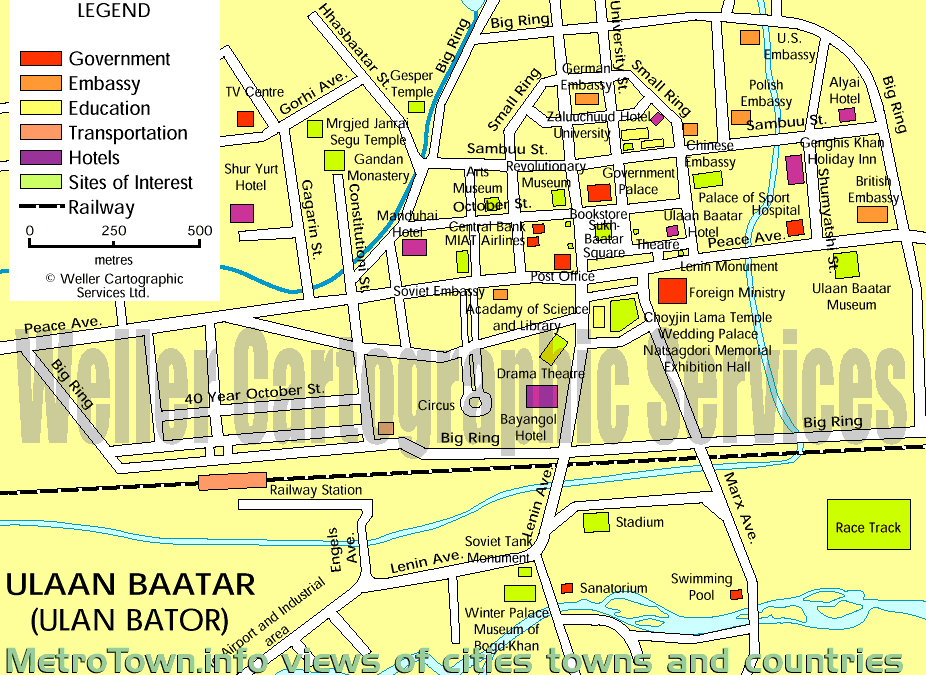| metrotown.info | Street map of Ulaanbaatar, capital city of Mongolia |
metrotown.info |
See also: Voice of Mongolia, formerly Radio Ulaanbaatar & Mongolia Reference Information Sites
Please note: the information on this map is several years old and locations of various buildings/services may not be the same as it is today, so please verify the location before going anywhere.
The Voice Of Mongolia is the country's only overseas broadcasting service and is operated by Mongolian National Radio & Television, a public service broadcaster of the Mongolian Government.
Short-wave international broadcasting in Mongolia dates back almost 40 years. The first broadcast, in September 1964, was a half hour transmission in the Mongolian and Chinese languages, beamed to China. In the next few years, Mongolian international broadcasting expanded its languages, broadcast hours and target areas.
The English service of Radio Ulaanbaatar was launched on January 29th, 1965. Radio Ulaanbaatar was renamed The Voice Of Mongolia on January 1st, 1997. Today the Voice Of Mongolia broadcasts programmes which aim to tell the world as much as possible about Mongolia and the Mongolians, their history, traditions and culture - and not just the politically important and so-called 'significant' details about the high and mighty; we want the world to know about the whole range of what this country contains and has to offer!
Since the start of a new democratic system of government, the Mongolian Government has introduced a much more 'hands-off- policy towards its broadcasters, encouraging unbiased reporting - except the bias is of course always towards Mongolia rather than any other country!
The Voice of Mongolia broadcasts a total of 8 hours a day in 5 languages - Mongolian, English, Chinese, Russian and Japanese.
|
The following information is quoted from the USA C.I.A. (Central Intelligence Agency) World Fact Book on-line at http://www.odci.gov/cia/publications/factbook/geos/mg.html -- we recommend you go there for a great deal more information about Mongolia (as well as other countries in the world). Mongolia
Location:
Map references: People Mongolia
Population: The above information is quoted from the USA C.I.A. (Central Intelligence Agency) World Fact Book on-line at http://www.odci.gov/cia/publications/factbook/geos/mg.html -- much more information about Mongolia is available on their web site. If you've not used this public service before, you'll find it a great starting point for quick general reference work. |
The above map and information is owned by the respective sources, including Weller Cartographic Services Ltd. www.cityofnanaimo.com, and the respective web sites mentioned above.
| Return to top of page | Return to Metrotown.info home page | Email mapmaker Angus Weller weller@axion.net | Email MetroTown.info query@metrotown.info |
This page was last updated January 03, 2003